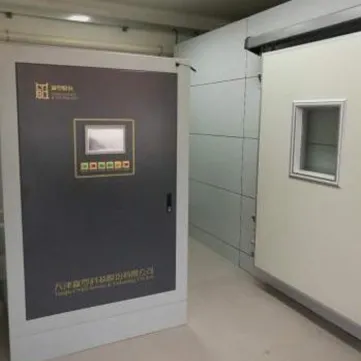Museum display cases come in a variety of sizes, and the size of a display case will depend on several factors, including the objects to be displayed, the available exhibition space, and the specific requirements of the museum or exhibition. Here are some key considerations regarding the size of museum display cases:
The size of the objects to be displayed is a significant factor in determining the size of the display cases. Museum artifacts can vary widely in size, from small delicate artifacts to large sculptures or installations. The display case needs to provide adequate space to accommodate the object comfortably and ensure its proper preservation and viewing. Additionally, the case should have sufficient clearance and support systems to protect the object and prevent any contact or damage.
The available exhibition space within the museum or gallery is a crucial consideration when determining the size of display cases. The display cases should be proportionate to the exhibition area and allow for appropriate circulation and viewing angles for visitors. Museum professionals carefully plan the layout and placement of display cases to create an engaging and accessible exhibition space while ensuring the safe display and movement of objects.
Display cases should be designed with the visitor experience in mind. The size and arrangement of the cases should allow visitors to view the objects comfortably and appreciate the details without obstruction. The height of the display case should be appropriate for various age groups and individuals with different heights, ensuring an inclusive and accessible experience for all visitors.
Preservation and conservation considerations play a significant role in determining the size of display cases. The case should provide a controlled environment to protect the object from light, humidity, temperature fluctuations, dust, pests, and other potential risks. Sufficient space within the case is necessary to accommodate protective materials, such as padding, mountings, or environmental control systems, to ensure the object's long-term preservation and minimize any potential damage.
The size of the display case may also be influenced by specific display techniques or interpretive strategies employed by the museum. For instance, if the museum wishes to incorporate multimedia elements or interactive displays alongside the object, the case may need to accommodate additional space for screens, digital interfaces, or interactive components. The size of the case should allow for effective integration of these elements while maintaining the focus on the displayed object.
Many museum display case manufacturers offer modular or customizable options that allow museums to adjust the size and configuration of the cases to suit their specific needs. Modular cases can be combined or reconfigured to create different display layouts, providing flexibility for future exhibitions or changes in the collection. Customizable cases allow museums to design display solutions tailored to their specific objects, exhibition requirements, and available space.
It is important to note that there is no standard size for museum display cases, as each museum and exhibition has unique requirements. Museums work closely with exhibition designers, curators, and display case manufacturers to determine the optimal size and configuration for their specific displays. Collaboration between museum professionals and industry experts ensures that the display cases effectively showcase the objects, provide a positive visitor experience, and safeguard the artifacts for generations to come.
CNRO Science& Technology Co., Ltd. specializes in the research and application promotion of low-oxygen controlled atmosphere protection technology, involving cultural heritage controlled atmosphere protection, Chinese herbal medicine (tobacco) low-oxygen insecticidal and controlled atmosphere maintenance, and active low-oxygen fire prevention/fire extinction, modern constant humidity controlled atmosphere storage, controlled atmosphere preservation of fruits and vegetables, hypoxic fitness and medical rehabilitation. It is a high-tech enterprise engaged in overall solution design, system integration, equipment production, and installation services.
CNRO has formed an independent intellectual property system, has more than 300 patents, and has participated in the compilation of a number of national and industry standards.
For more information, please contact us. We will provide professional answers.
 Atmospheric-Pressure Low Oxygen Controlled Atmosphere Insecticidal Warehouse/ Cabinet
Atmospheric-Pressure Low Oxygen Controlled Atmosphere Insecticidal Warehouse/ Cabinet
 Low-oxygen(constant Humidity) And Clean Storage Cabinet
Low-oxygen(constant Humidity) And Clean Storage Cabinet
 Museum Collection Storage Warehouse
Museum Collection Storage Warehouse
 Low Oxygen Constant Humidity and Clean Warehouse
Low Oxygen Constant Humidity and Clean Warehouse
 Museum Drawer Cabinets
Museum Drawer Cabinets
 Museum Wall Display Case
Museum Wall Display Case
 Museum Table Display Cases
Museum Table Display Cases
 Museum Exhibit Display Cases
Museum Exhibit Display Cases